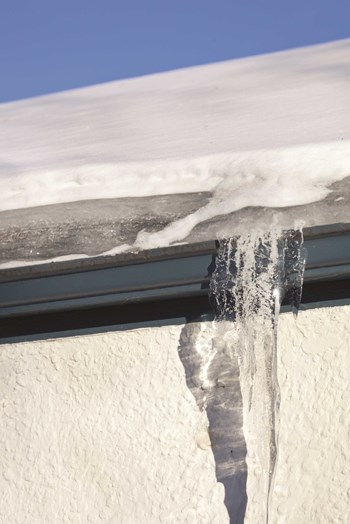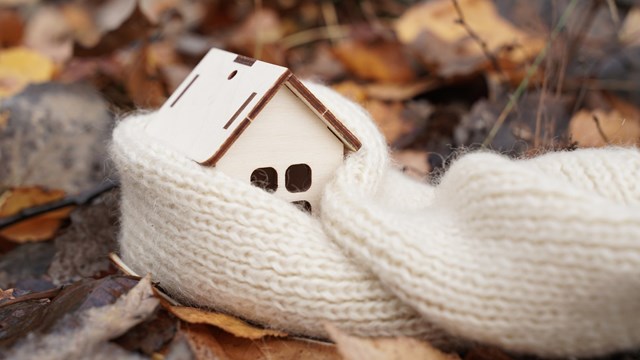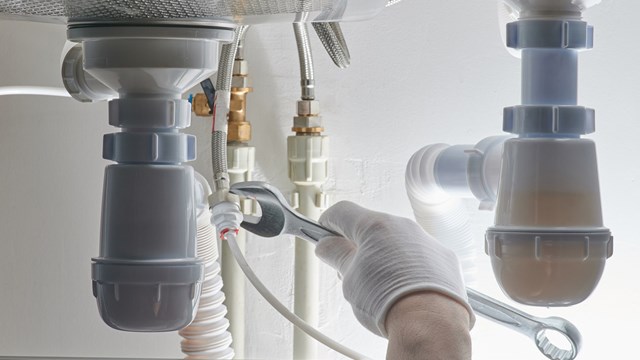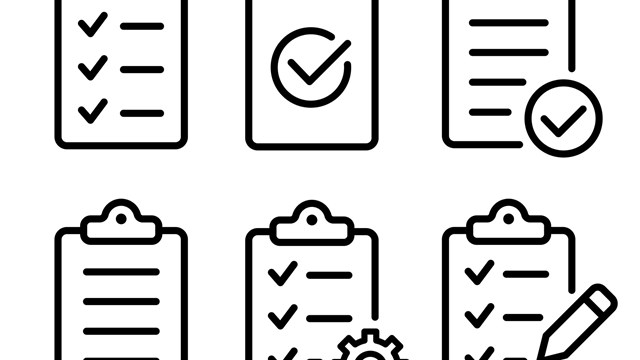
No one would deny New Jerseyans are tough. But even the most stoic Garden State resident shivers a bit when the first signs of winter settle over the state. The inevitable arrival of snow and ice take their toll not only on the people of the East Coast, but on their homes as well. From high rises to townhouses to community association bungalows, every home must be protected against the onslaught of winter weather that can damage pipes, roofs, windows and sidewalks. For the men and women whose job it is to make sure that damage is minimal—or ideally, nonexistent—preparations start early and require and ongoing vigilance.
Getting Ahead of the Curve
According to William Pyznar, principal engineer at Falcon Engineering in Bridgewater, the process of winterizing a building should start early, ideally, in September or October. One of the first steps should be inspecting doors and windows and closing up any areas where cold air can enter or warm air can exit. “If the windows are in good condition, just make sure they’re locked and shut,” he says. “If they’re older, make sure the weather stripping is good. Look at the seals on the outside of the windows. Make sure they’re still in good shape.”
It is also possible to check where drafts are in order to eliminate or reduce the loss of heat before winter hits. “You could do an infrared scan to see where there are drafts and that will show where you are missing insulation,” says Pyznar.
John Colella, president of YES Property Management Group, LLC, in Nutley, urges a walk around community association properties to inspect the common areas and recreational areas. “By October, you better be on top of everything,” he says. “Develop a checklist to outline the various common area conditions and be proactive to the circumstances that need attention prior to the winter season.”
Keeping the Ice at Bay
Surely one of the most visible and one of the most avoidable problems that face managers and unit owners during the winter months is ice damming, which is a build-up of ice over an unheated portion of roof or gutter. It is a serious issue that can lead to roof damage and leaking. There are two key ways to avoid the problem: good insulation and good ventilation, according to Pyznar. “You want to cover penetrations into the roof space, such as lights and fan areas, that let warm air into the (attic or ceiling) space,” he says. “You want to keep the attic temperature as close to the outside temperature as possible.” If the air inside the attic is too warm and damp, it will help melt the snow on the roof. When that snow melts and then the temperature drops, that water will freeze again, causing the large dams of ice over the eaves and near the gutters.
“If you have a ridge vent in your roof, the heat goes out and the roof stays close to the same temperature as the outside and there’s no premature melting,” says Barry Scymanski, general manager of Alpine Roofing, with locations throughout New Jersey and New York. He agrees that the right amount of insulation is absolutely imperative to protecting a roof. “Your attic should be a similar temperature to the outside,” he says. “If it’s 30 degrees outside, it shouldn’t be 40 or 50 degrees inside. You should insulate to keep heat in and cold out.” The insulation should be heaviest on the ceiling between the living space and the roof or attic area. “Heat is not going to go out as much as up, so your ceiling should get more insulation,” Scymanski says.
Ice damming can cause significant trouble with leaks. “You get a flood of water that can’t get to the gutters or off of the roof, so it will follow the path of least resistance and go through nail holes,” and eventually cause leaking, says Scymanski.
To keep water out of those nail holes and protect the roof from leaks, Scymanski suggests using an ice and water shield, which goes under the shingle and serves as a rubberizing protectant. “It goes along the gutter edge, around chimneys and vent pipes as well,” he says. “It’s very gooey and it seals around nails.” And it should last up to 50 years—a comforting thought for homeowners.
Ice damming also can be a problem in homes or units where the roof’s slope is too low. “It takes longer for water to run off and it can freeze,” Scymanski says. Pitch and angle are also a problem with gutters. If they are not pitched correctly, water does not exit where it should and will freeze inside the gutter, preventing snow and water from escaping. “It just amplifies the ice damming issue,” Scymanski says. A roofing company should be able to correct that pitch problem fairly easily, preventing future headaches.
Ice can cause trouble in other ways, too. Ice damage can also happen “if the gutters are not cleaned out,” says Colella. Sometimes an association or building may start their fall cleaning too early and not do another pass after the final leaves have fallen, leaving drain blocking material in the gutter systems.
For roofs with consistent ice damming issues, Scymanski suggests heat wires, which are attached to the shingles and run up and down the edges of the roof. The wires are fed through the gutters and simply plugged into an outlet at ground level. The wires warm up and keep the edge of the roof from freezing. “The snow will still be there but the wires keep the water flowing so it doesn’t freeze up and create a block of ice,” says Scymanski.
In extreme instances, putting metal panels on the edge of a roof in place of gutters will prevent ice damming, says Scymanski. Done sometimes in the Boston area, the metal panels ensure that snow and ice will simply slide off the edge of the roof. For buildings or homes with basements, however, they are problematic, causing heavy water saturation at the base of each structure and raising the risk of basement flooding.
It is also important not to delay repairs. “If you have leaks in the summer months, you’ll have leaks in the winter,” says Colella. It is never a good idea to put off roof or gutter maintenance thinking it can be taken care of in the spring or summer. When ice and water are involved, things can only get worse, he says.
Mostly, just check and double check. “Most roofing manufacturers recommend walk-throughs twice a year—once in the spring and once in the fall,” says Pyznar. “You want to make sure flashings are all in place and fasteners are all in place. Changes in temperature can loosen things.”
Snow and ice also can do significant damage to pavement and sidewalks. Roads in and out of condo associations as well as parking lots and other paved areas “unquestionably will get damage,” says Colella. Most often, this is from salt and from the scraping of snow truck plows. Colella suggests patching potholes and filling in any major pavement cracks before the winter season starts in order to prevent water seepage which freezes up and creates larger cracks and potholes.
Protect the Plumbing
No one wants to have to deal with plumbing issues, especially in the dead of winter. By double checking that everything that should be off actually is off, a lot of headaches can be avoided. “You’ll want to drain all of the hoses and blow out the sprinkler system,” says Colella. “Draining the exterior hose is a vital precaution for freeze-ups.” It is also important to check and make sure all plumbing and heating systems are running smoothly and the vent pipe is unobstructed to the exterior.”
In addition to adequate insulation on pipes, Pyznar also suggests ensuring that the insulation is up to date and undamaged. Material that has lost its ability to warm is worthless and can just be creating a false sense of security.
When it comes to water, remember that for associations with pools, shutting those down properly is part of the winterizing process. Colella suggests taking an inventory of all the equipment and ensuring that everything is dismantled, drained and stored properly.
Preparation Saves Money
For residents and for management, one of the biggest reasons to prepare well for the winter is the fact that it not only saves the property, it also saves money. With insulation and sealed windows and all of the other things that go into protecting a home or building from harsh winter weather, heating bills can also be lowered and energy consumption reduced.
“There are definite energy savings,” adds Pzynar. “You may have a draft that is allowing cold air in. Your heating system will keep up and you might not notice it until you get the bill. But there are things that can be done to improve those savings.” And all of them—insulation, checking the flashing, installing new weather stripping—go a long way towards ensuring that everyone’s home and building will survive the cold, dark days ahead undamaged.
For unit owners, there is one other simple tactic to save on those winter energy bills: letting in natural light. “Let the sun in during the daytime and take advantage of the sunny daytime period to allow sunlight to naturally warm your home,” says Colella.
Stay on Top of the Problem
In an especially rough winter, snow and ice removal can seem overwhelming yet it is important to tackle it early and stay on top of the issue throughout the season. Being prepared and knowing what to expect are key in making those short days and long nights of winter less damaging and less expensive for boards, managers, residents and staff. “Know your property inside and out,” says Colella. “Really look at it, take your time, look at your checklist and be proactive.”
Managing and protecting properties through the long winter months can feel like a constant battle, but it can be won by paying attention to the details, doing what needs to be done and knowing that if you can just hang in there for a few more months, the ice will melt, the snows will disappear and spring will return. We promise.
Liz Lent is a freelance writer and a frequent contributor to The New Jersey Cooperator.






Leave a Comment